 Have you ever felt like the end of a yoga class was rushed or left incomplete? Have you ever wished savasana lasted just a few minutes longer? Good time management and the ability to stay present, along with other basic skills, can be used to end a yoga class in a meaningful and uplifting way. This blog post covers 5 tips that will help you do this, and thus keep your students coming back for more.
Have you ever felt like the end of a yoga class was rushed or left incomplete? Have you ever wished savasana lasted just a few minutes longer? Good time management and the ability to stay present, along with other basic skills, can be used to end a yoga class in a meaningful and uplifting way. This blog post covers 5 tips that will help you do this, and thus keep your students coming back for more.
I just returned from a week-long trip to Southern California. The drive down took about ten hours, and I had the added stress of baking 200+ cupcakes for my brother’s wedding. My first stop at any new destination when traveling is always a yoga class, so I hit up a 6 am flow at a nearby studio. I was shocked to find that 65 minutes of the 75-minute class was spent on an active, intense flow. This barely left any time for a cool down, much less savasana. I left the class feeling almost as ungrounded as I did when I arrived.
The situation I described above is actually not uncommon, as I’ve had this happen at numerous studios around the country. I believe that you can learn from every situation. This article calls all yoga teachers to an elevated standard of professionalism by mastering the power of timing. We’ve already looked at how to start fresh in beginnings, as well as avoid getting stuck in the middles. Today, our focus is on the end.
SAVOR THE SWEETNESS OF ENDINGS
There is a longstanding tradition that sweet treats follow a savory meal. In fact, the word dessert originated from the French word ‘desservir,’ which means ‘to clean the table.’ The mouth actually contains specialized receptors for various tastes, and sweetness provokes a feeling of pleasure in the brain and body. Since most people remember endings with the most clarity, it’s no wonder that a sweet dessert would ensure a positive memory with any dining experience.
While you’re probably not going to pair cupcakes with savasana, you do want to end on a meaningful note. As author Daniel Pink shares in his book, WHEN, endings influence what we do and how we do it. In fact, they shape our behavior in the following four ways:
ENERGIZE
When endings near, people want to finish strong. This has been demonstrated in various areas of research. Atler and Hershfield found that 48% of first-time marathon runners were those in their last year of a life decade (such as 29, 39, or 49 years of age). Stats from the National Football league show that a significantly higher amount of points were scored in the last minute before halftime and the last minute of the game. What we learn is that endings energize us to find significance in our actions and make the most of the time we have left. This happens in savasana as the energy created from the practice flows throughout your entire being.
ENCODE
At the end of any event, you also evaluate and record your experience. Sometimes this is done consciously or reflectively. Other times, subconscious thoughts and sensations might just get stored in the body. In any case, research shows that we use endings to assess the entire experience (even if the experience had some unwanted elements in the beginning or middle).
If this is true for meals, movies, and vacations, it easily translates to the yoga studio, too. This is why ending on a high vibration is so important. Students will most likely forget any miscues or missteps earlier in class. However, the feelings they experience at the end of the sequence, and in final resting pose, will linger with them long after they leave the room.
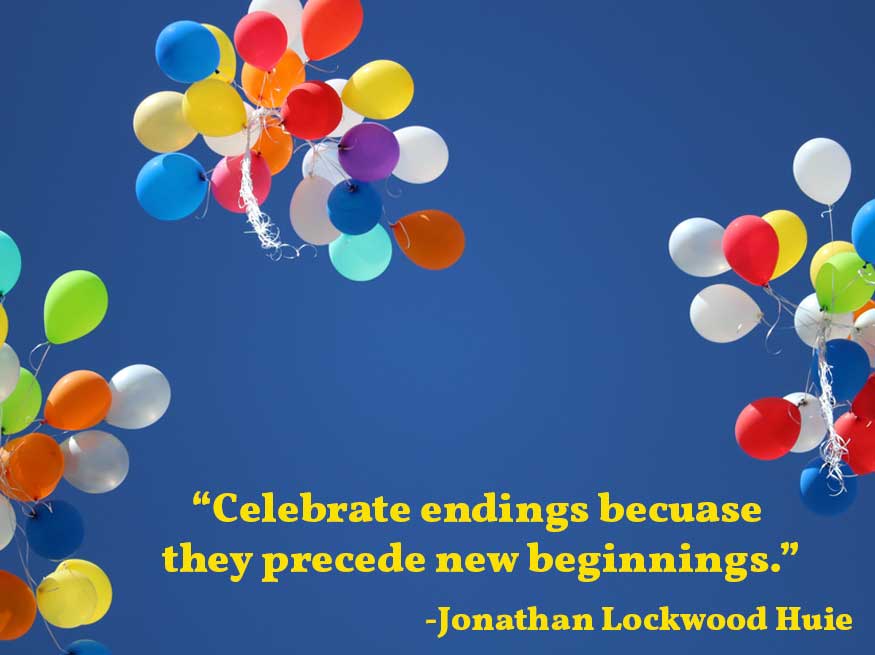
Photo Credit: Ankush Minda
EDIT
I’m a writer and I love to edit. But, editing extends far beyond blog posts. In fact, much of my time is spent making yoga businesses more efficient. This often means removing behaviors and tactics that are wasting their time or energy. Several studies show that eliminating less important relationships and activities often happen naturally toward the end of one’s life.
But why wait until your life is ending, or your business is failing, to make different choices? Instead, use the wisdom from endings to you satisfy your greatest needs now. You can do this each time you come to your mat with mindful steps into each pose. You can edit your thoughts by directing them in a positive, life-affirming direction. And, you can focus on the essence of life–which is the breath–as you cease movement in corpse pose.
ELEVATE
When someone offers you good news or bad news, which one do you choose first? If you’re like a majority of humans, you want to get the bad news out of the way so you can end on a good note. Said another way, we prefer endings that elevate us. You might think that it’s just happy endings that give you the best feelings possible. However, researchers discovered that poignancy–meaning experienced through the blend of joy and sadness–can be the most inspiring emotion of all.
HOW TO END A YOGA CLASS
Endings can be a positive force to help you reach your goals, evaluate what’s important in your life, and find meaning in your choices. Specific postures or sequences you take to bring the body back to equilibrium will play a role in how your students experience the end of a yoga class. We’ll save the sequencing component for another time.
Instead, take a look at the 5 timing tips you can implement to maximize the clarity and restoration that endings can provide for your classes. When you actively work to build these skills, you will be facilitating positive experiences for those in your presence. This becomes magnetic. People will undoubtedly want more, even if they can’t explain the specific elements that keep drawing them back to your light.
TIP 1: TIME MANAGEMENT
Rushed endings, like the one I experienced in Southern California last week, are really a result of poor time management. Too much time was spent on creating a strong beginning (which did happen) and balanced middle (which it did, too). Yet, if you learned anything based on the research notes above, evaluation of the experience only really comes at the end. If students are rushed out of the door, or given less time to calm the mind and body before savasana, that energy follows them as they leave the room. Even if you had some great other ending items planned (like in the tips you’ll see below), the effect will fall short due to the urgency created when you ran out of time.
One simple solution?
Evaluate how much time it will take you to include a proper savasana (say, 10% total time of your class) and the balanced sequence of poses that counter the strong work done previously. Then, organize your class with that ending in mind. This will allow you to keep your simple and clear beginning, and prevent you from overcrowding the middle of your sequence.
TIP 2: INCLUDE A PERSONAL TOUCH
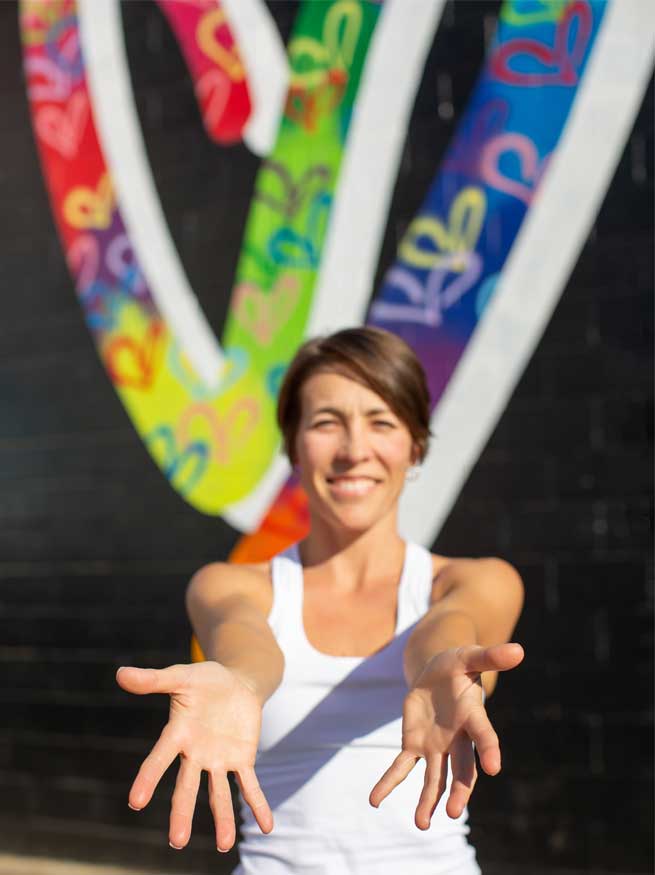 One of my favorite things about traveling the country and taking a variety of class styles is the unique approach each teacher has with their ending. Some have chanted with the most beautiful of voices. Others have mindfully adjusted the body or created a sense of calm through the use of essential oils.
One of my favorite things about traveling the country and taking a variety of class styles is the unique approach each teacher has with their ending. Some have chanted with the most beautiful of voices. Others have mindfully adjusted the body or created a sense of calm through the use of essential oils.
You are unique and have specific interests and talents that make you special. Use them to create a one-of-a-kind experience for your students. You could:
- Play the harmonium
- Read a poem, quote, or story
- Share your favorite song (and share why it is so meaningful to you)
- Adjust your students
- Rub essential oil on the body
- Walk the room with aromatic oil or a live plant
- Play a singing bowl or gong, or
- Invite students to sit for a guided meditation
The options are endless, and the growth as a yoga teacher never ends. You might even start learning more about any of these options above to bring more inspiration to your own study, and eventually your students.
Photo Credit: Diane Nicole Photography
TIP 3: ADD MEANING TO THE END OF CLASS
In the end, we seek meaning. The volumes of scientific research available today make this very clear. You can help students apply meaning to their practice by reminding them of what they have accomplished while on the mat. Refer back to the physical aspects addressed in class, or the mental and emotional fortitude that was built by undertaking such poses. You could even remind them to take a moment of appreciation for simply undertaking yoga today, for gratitude is restorative and elevating at the same time.
While meaning will differ for each student, you can powerfully facilitate the reflection on that meaning through your questions and words. Choose them wisely at the end, and remember that sometimes saying less can be more impactful.
TIP 4: STAY PRESENT
I don’t mean to insult your intelligence with this tip. However, I’ve been in numerous yoga classes in which the teacher has physically left the room during savasana. This might not seem like a big deal because students are blissfully on their back with their eyes closed.
Yet, as a teacher, part of your job is to hold the still and sacred space for their transformation. You hold the knowing that change is occurring on many levels of their being. Because of this importance, and the fact that this is not always practiced at studios, I find it essential to clearly state that remaining present–both physically and metaphorically–can elevate the experience for your students at the end of a yoga class.
Additional Ideas:
Here are a few more ways you can remain focused and centered while your students take their final resting pose:
- Make sure you can see a clock. This will ensure that you honor your students by giving them ample time in savasana and allow you to end class on time. You will also be less likely to fidget or move around if you can see the time from the get-go.
- Reflect on the theme of class yourself. Notice how it played out well in the class you facilitated and contemplate how it relates to other areas of your life. Perhaps even allow the theme to manifest as an emotion, and feel that emotion moving throughout your heart and body.
- Follow your breath, too. While students are encouraged to take on the role of an observer during corpse pose, you can breathe consciously, too. This practice also helps you maintain your personal alignment, which is just as magnetic as the positive experience you are creating for your students.
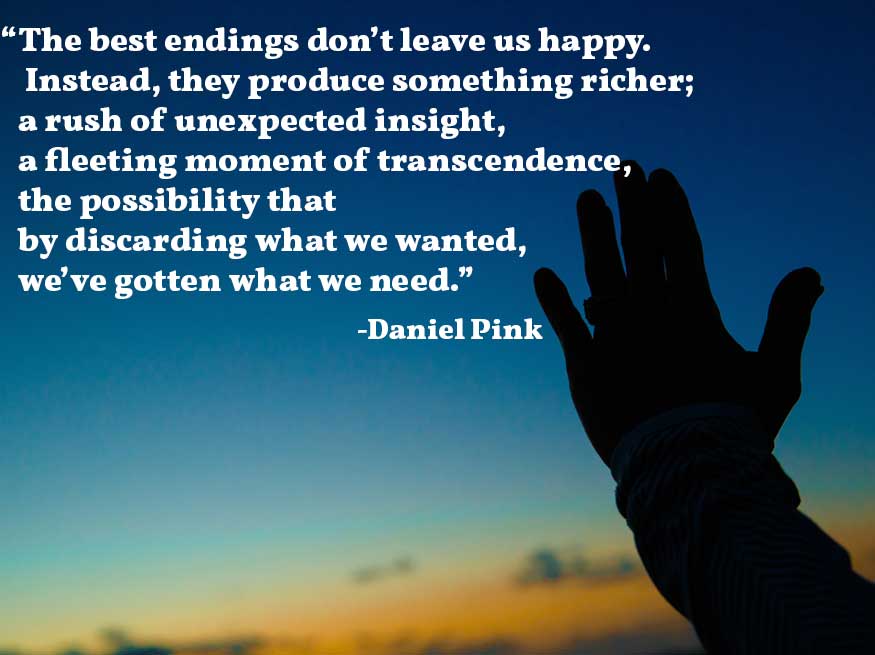
Photo Credit: © Casey Brooke Photography
TIP 5: NAMASTE TOGETHER
The phrase namaste directly translates to “the divine in me bows to the divine in you.” While often accompanied by anjali mudra, saying namaste aloud at the end of yoga class indicates a deep appreciation for both the student and the teacher in the learning process. In fact, as a teacher, you initiate this flow of energy. Then, in response to your Namaste, students repeat the phrase. Essentially, positive energy gets passed between all involved and that energy swells as the group comes together. For, namaste is far more than a phrase–it’s a heartfelt gratitude for the souls in the room. It’s a way to recognize their journey, their future, and the communion you have all shared during your class.
If a teacher has poor time management, and endings get rushed, a common recovery method is to (1) notify the class that time is up, (2) invite people to stay if they have the time to properly rest in savasana, and (3) simply namaste the entire class as the teacher walks out the door (as if using the phrase as a parting farewell.
By planning ahead, you can namaste together to get the maximum sense of harmony and upliftment for your group each and every time.
WAYS TO MAXIMIZE ENDINGS OFF OF THE MAT
While students might be oblivious to the specific components you are putting in place to create a magical ending for them, you can verbally teach them the value that endings provide for their lives. Perhaps share the information about endings at the beginning of this post. Or, you could encourage them to seek meaning in various end-points throughout their day. Some simple ways to do this include:
Create time blocks each day.
When you segment your activities and interactions, you are more clearly able to glean meaning from them. Plus, it gives you numerous changes to start fresh in a given 24-hour period.
End the work day with meaning.
Set aside 5-10 minutes at the end of each work period to reflect on what you accomplished. You just might be surprised as to how much you got done, even if it wasn’t a great day. Plus, you can take a few minutes there to consciously look to your next day ahead. This forward-thinking mindset can keep you energized as you move into tomorrow.
Savor the ending of your day.
Many times our daily schedules mirror that of a yoga class–we go from an active state to a passive one. Yet, in a yoga class, the transition between the two is often thoughtfully crafted by a yoga teacher. On your own,you can actually get the most benefit from your time asleep by preparing your body for it ahead of time. Take a hot shower or bath. Read a good book (but not too good it will keep you awake). Enjoy some soothing music. Research something you love. Do whatever it takes to deliciously enjoy the last few minutes of your day. Please share your ideas in the comments below.

Photo Credit: Jacob Dyer
Save the best for last.
As you discovered above, endings alter your perception of entire experiences. Disneyland knows this well, as they plan the best parades and most amazing fireworks shows just before each of their parks close. They want you to end on a high note. But you don’t have to visit their theme parks to experience this firsthand. Plan something fantastic for the last day of your next vacation. Coordinate a special dinner for your co-workers at the end of a semester or quarter. Add something unique and meaningful and fun to your next ending (whatever that may be). This will elevate not only the experience in the moment, but can leave lingering feelings of joy for months and years to come.
PUTTING IT TOGETHER
Each time you end a yoga class, you have the opportunity to energize and elevate your students. Five basic skills that create memorable endings include:
- Good time management
- Sharing a special gift or interest
- Adding meaning to the experience
- Remaining present, physically and emotionally
- Saying namaste as a group
Remember, the clarity you provide with your intentions and actions will rub off on your students. And, it can encourage them to make better choices, increase their efficiency, find satisfaction in their yoga practice, and much more!
Stay tuned next week as we uncover 8 building blocks for business success! Plus, we’ll include a special giveaway to help you enhance your entrepreneurial prowess. See you then!


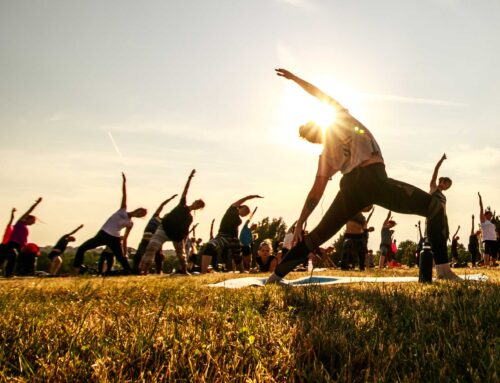

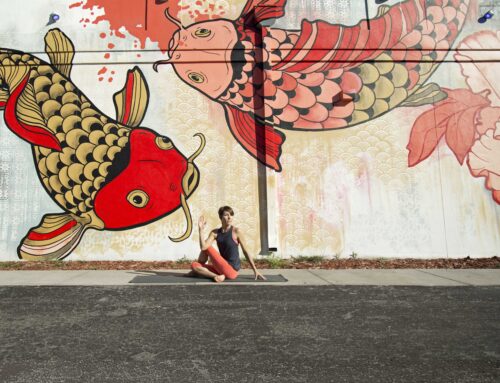
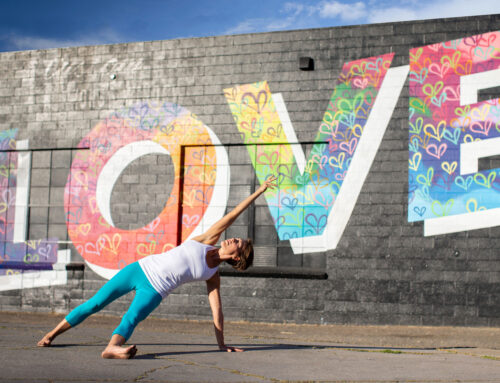
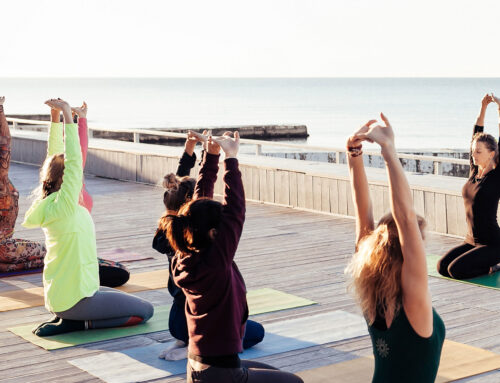

Such a loving and heartfelt commentary on savassna. As a yoga teacher I sometimes have a student who leaves b4 every savassna and I wondered how to work that out?
Hi Michele, Great question. I would normally suggest a 3-fold approach to seeing a student leave early on a regular basis. First, is the noticing part. Congrats, you’ve done that without judgment and are genuinely interested in your student getting the most from their practice (including the integration of savasana). Next, I would approach them directly when you have a discreet moment. Ask them in a kind way why they have to leave class early so often. It could be a logistical reason and they really are so thankful to just be able to get in most of class (which is better than nothing, although I understand it can be distracting to others when someone leaves). Listen with an open mind. Then, based on their answer you can use a third part to the process–create a solution that works for you both. Share 1 or 2 ways they can minimize disruptions in your class if they need to leave early, or perhaps find another time on the schedule that works better. You could also suggest ways they integrate their practice on their own time, like breathing deliberately in the quiet of their car as they drive away, incorporate some meditation into their regular schedule, or evening journal reflections. The goal is to support them while supporting yourself and your students. I love your desire to create a sacred space for all to practice.
Let me know if you want more on this subject. It’s very common and I believe others can learn from it as well.
Talk soon, Kym